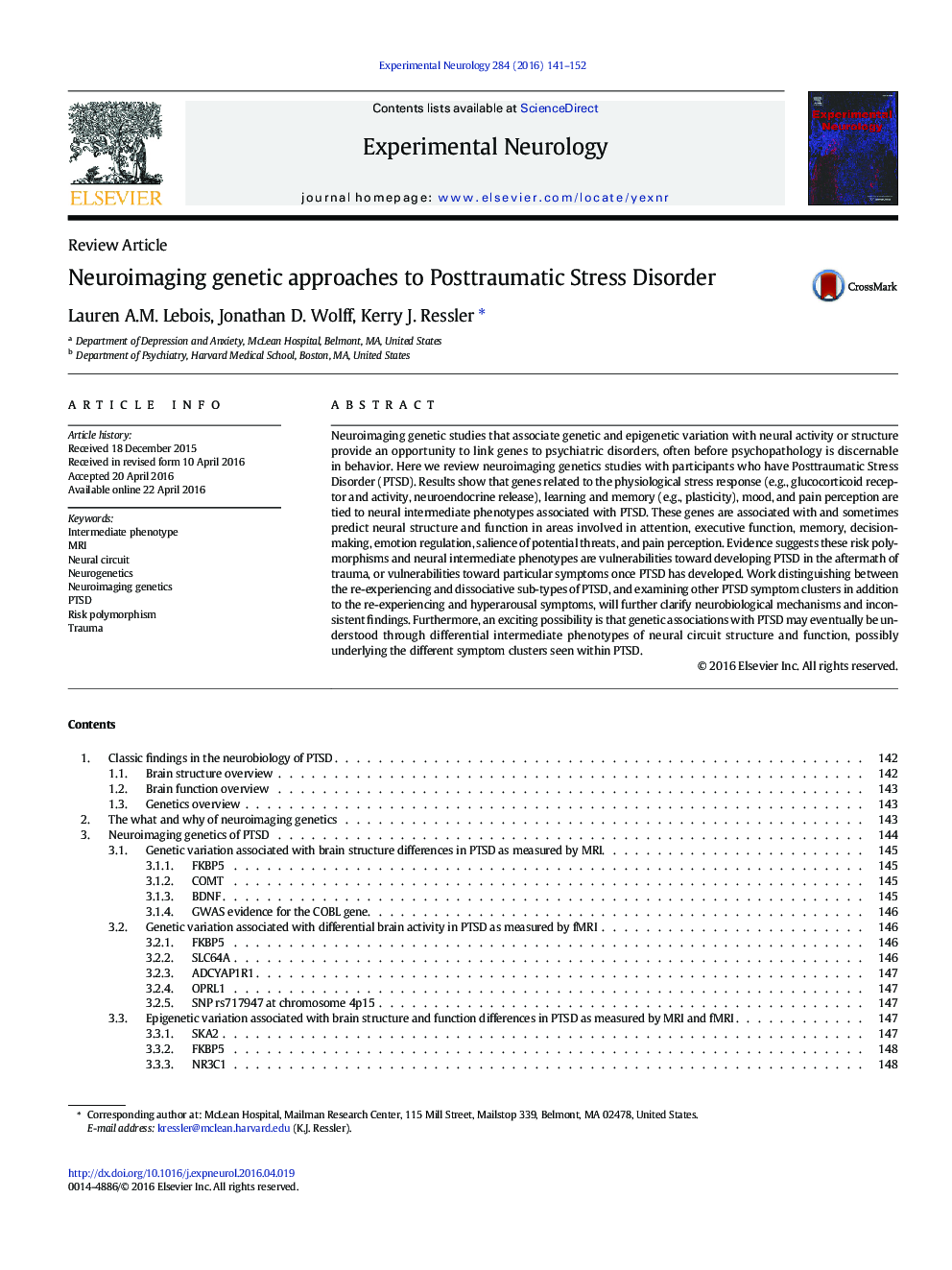| Article ID | Journal | Published Year | Pages | File Type |
|---|---|---|---|---|
| 5629252 | Experimental Neurology | 2016 | 12 Pages |
Neuroimaging genetic studies that associate genetic and epigenetic variation with neural activity or structure provide an opportunity to link genes to psychiatric disorders, often before psychopathology is discernable in behavior. Here we review neuroimaging genetics studies with participants who have Posttraumatic Stress Disorder (PTSD). Results show that genes related to the physiological stress response (e.g., glucocorticoid receptor and activity, neuroendocrine release), learning and memory (e.g., plasticity), mood, and pain perception are tied to neural intermediate phenotypes associated with PTSD. These genes are associated with and sometimes predict neural structure and function in areas involved in attention, executive function, memory, decision-making, emotion regulation, salience of potential threats, and pain perception. Evidence suggests these risk polymorphisms and neural intermediate phenotypes are vulnerabilities toward developing PTSD in the aftermath of trauma, or vulnerabilities toward particular symptoms once PTSD has developed. Work distinguishing between the re-experiencing and dissociative sub-types of PTSD, and examining other PTSD symptom clusters in addition to the re-experiencing and hyperarousal symptoms, will further clarify neurobiological mechanisms and inconsistent findings. Furthermore, an exciting possibility is that genetic associations with PTSD may eventually be understood through differential intermediate phenotypes of neural circuit structure and function, possibly underlying the different symptom clusters seen within PTSD.
